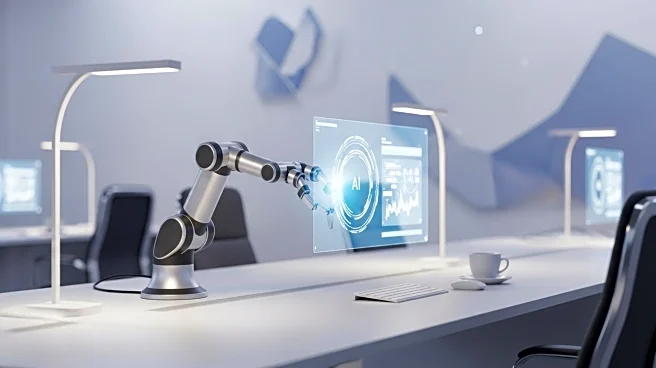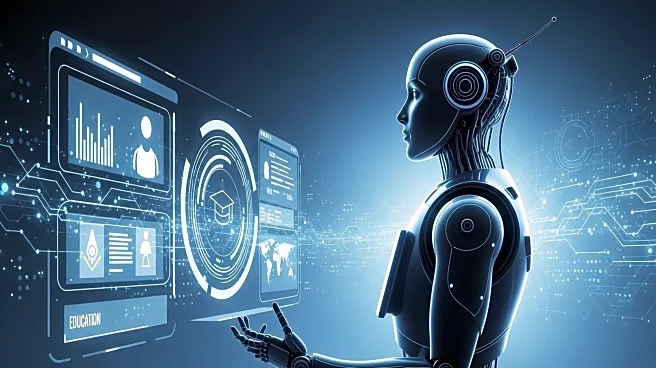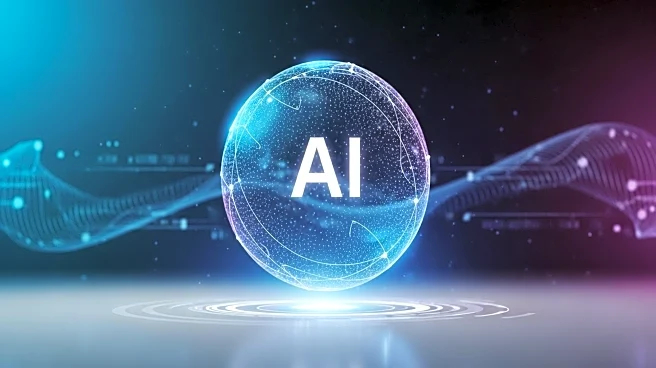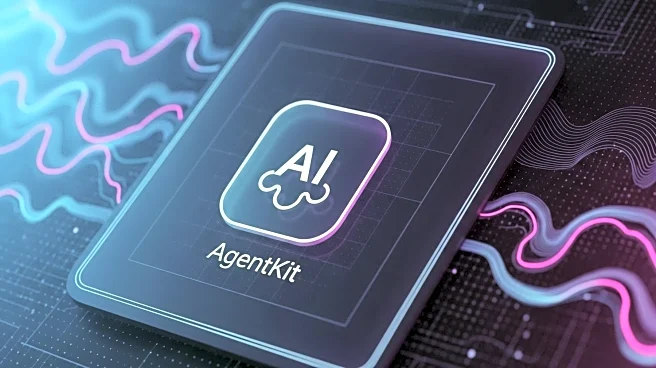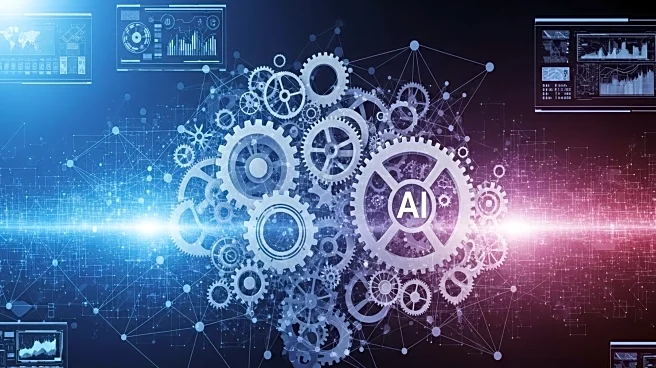What's Happening?
The U.S. Department of Labor has issued a Training and Employment Guidance Letter (TEGL No. 03-25) directing states to utilize Workforce Innovation and Opportunity Act (WIOA) grants to enhance AI literacy. This federal mandate aims to rapidly retool the workforce in the Architecture, Engineering, and Construction (AEC) sector, where Building Information Modeling (BIM) and computational design are already standard practices. The integration of AI is seen as a structural disruptor rather than just a staff augmentation tool. Industry leaders are encouraged to focus on maximizing efficiency, protecting proprietary information, and ensuring workforce competence in the face of AI advancements. The guidance emphasizes the importance of actionable adoption of AI technologies, moving beyond mere curiosity to methodical integration.
Why It's Important?
The mandate for AI literacy in the AEC workforce is significant as it addresses the growing influence of AI technologies in the industry. By enhancing AI literacy, the Department of Labor aims to prepare the workforce for the challenges and opportunities presented by AI. This move is expected to improve efficiency and innovation within the sector, potentially leading to cost savings and increased competitiveness. However, it also raises concerns about job displacement and the need for ethical standards in AI deployment. Companies and professionals who adapt to these changes stand to gain a competitive edge, while those who lag may face operational challenges and reduced market relevance.
What's Next?
As the mandate is implemented, AEC firms and professionals will need to develop strategies for integrating AI into their workflows. This includes establishing human checkpoints for AI-generated content to ensure accuracy, ethical compliance, and brand alignment. Training programs and certifications related to AI will become increasingly important for sustaining relevance in the industry. Stakeholders will likely engage in discussions about the ethical implications of AI and the need for regulatory frameworks to govern its use. The focus will be on transitioning from using AI as an assistant to leveraging it as a solution for enhancing efficiency and productivity.
Beyond the Headlines
The push for AI literacy in the AEC sector highlights broader ethical and legal considerations. As AI becomes more integrated into professional workflows, issues such as data privacy, intellectual property rights, and bias in AI models will need to be addressed. The shift from human production to AI-driven processes may also lead to cultural changes within organizations, affecting job roles and responsibilities. Long-term, this development could influence educational curricula and professional training programs, emphasizing the need for interdisciplinary skills that combine technical expertise with ethical and legal knowledge.


